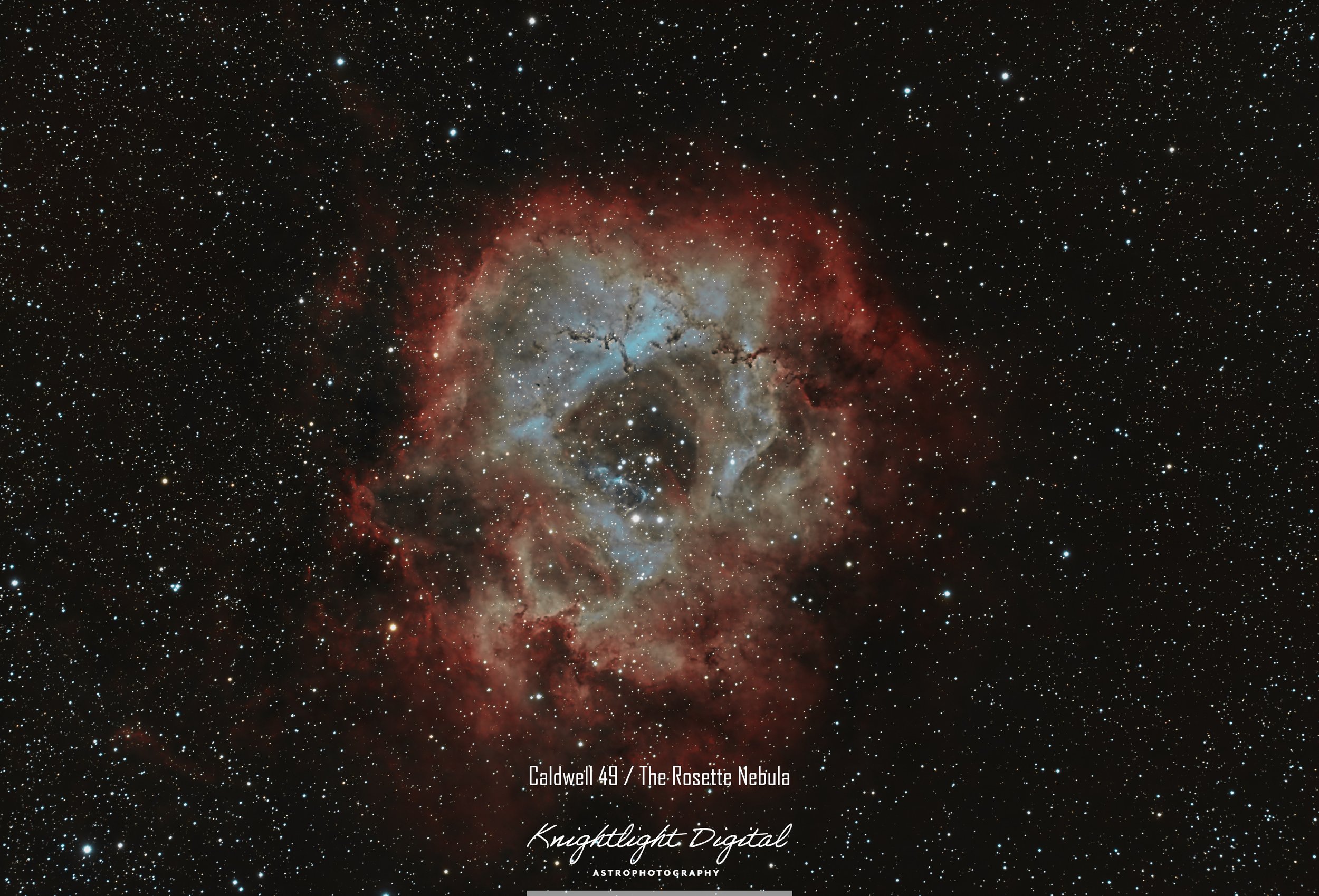The Rosette Nebula / Caldwell 49
Imaged on November 12, 2024. This image is composed of 3 hours of data: half in Ha/OIII and half in SII/OIII (The Askar C1 and C2 filters, respectively). The weather had not been very cooperative and it was only by pure luck that I pointed the telescope at the Rosette at all. The seeing ended up being pretty good so I let the scope run all night. With some help from a fellow astrophotographer on TikTok, I worked my way through splitting and recombining the data to get the result you see. An AI-generated description of the nebula is posted below.
The Rosette Nebula, also known as NGC 2237, is a large, beautiful star-forming region located in the constellation Monoceros, which means "Unicorn" in Greek. This nebula spans approximately 50 light-years across and is situated about 4,500 light-years from Earth. Its shape resembles a flower, with the bright, pinkish petals formed by hydrogen gas illuminated by the energy emitted from nearby young, hot stars. The central cluster of stars, known as the NGC 2244, plays a crucial role in the nebula's illumination and structure. The Rosette Nebula is a popular target for both amateur and professional astronomers due to its striking appearance and the insights it provides into stellar formation processes.
